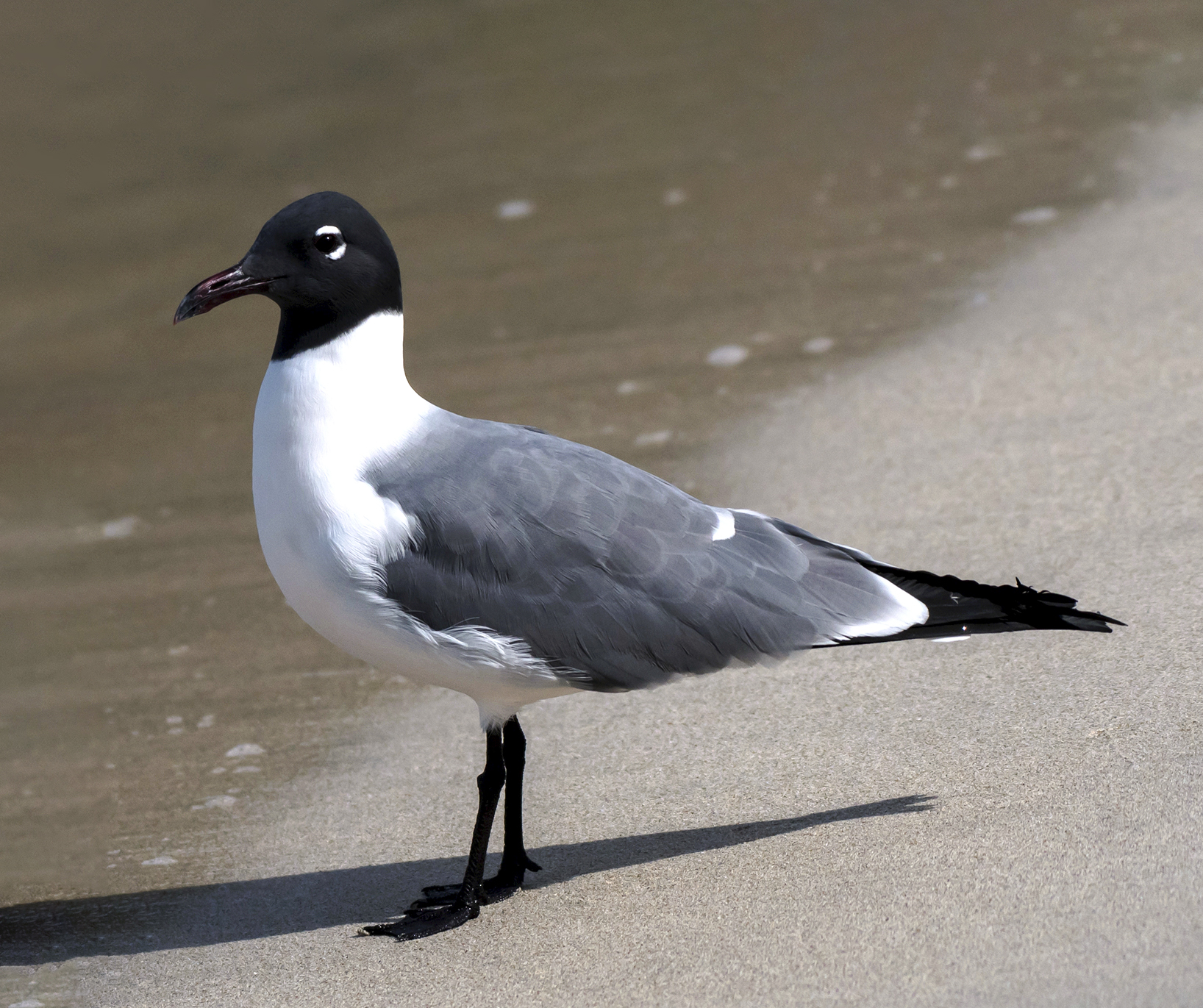
There are no gulls in the Virgin Islands during the winter, but then the laughing gulls suddenly arrive right around the first of April. And like other spring visitors, they tend to come in groups and enjoy loud, amorous beach parties.
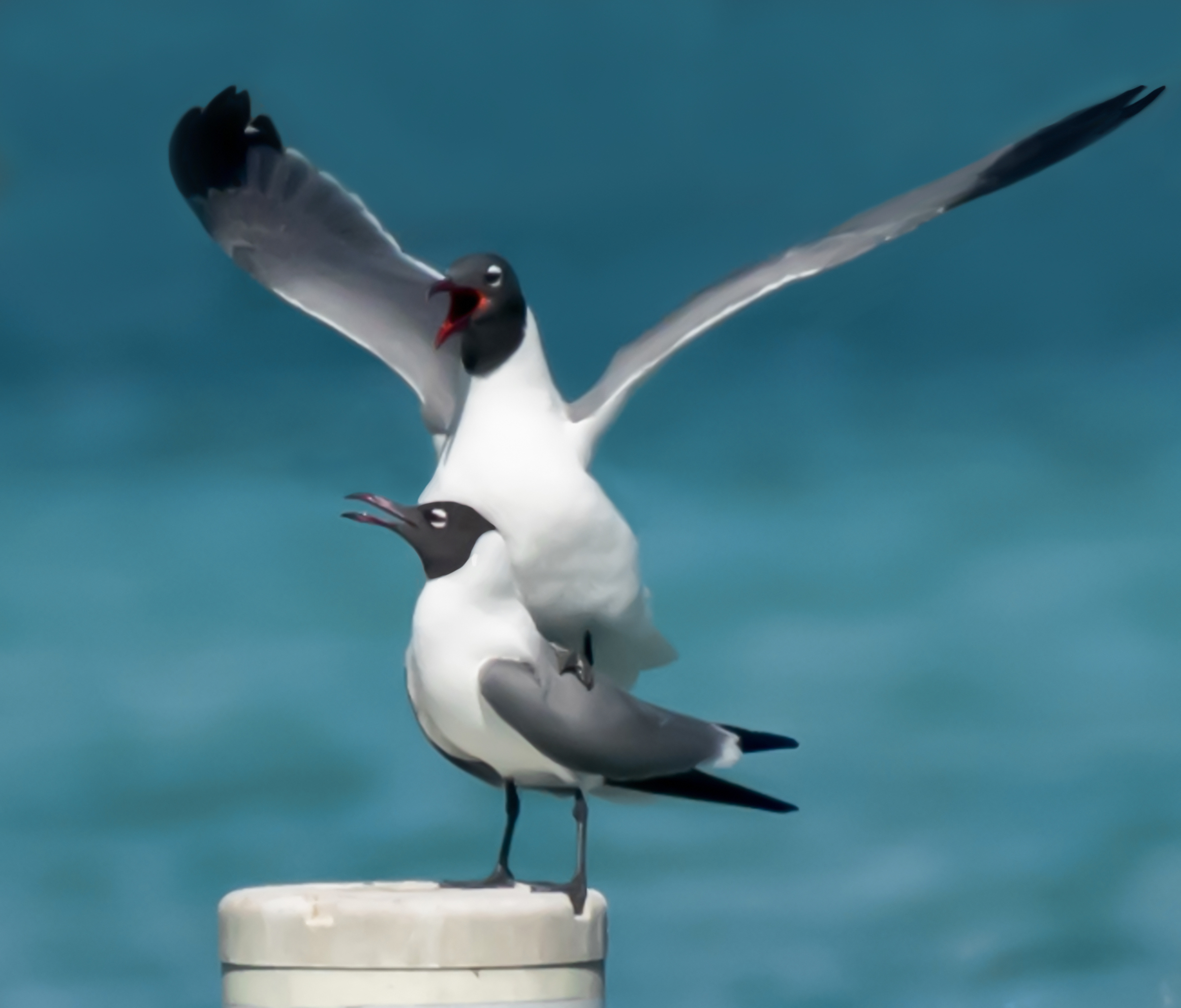
However, the laughing gulls are known to be monogamous. Before long the couples will work together to make nests and raise their chicks out on the smaller, uninhabited cays. They usually stay together in large groups through the nesting season, for safety in numbers.
I recently began to wonder where these laughing gulls actually come from, and why they are only around in the summer.
Most migratory birds in the Virgin Islands arrive when it is winter in the northeast and food is scarce. Then they leave in the spring to go up north for their breeding season. In the fall, when it gets cold again in the northern parts of the U.S., those birds fly back down.
These laughing gulls are on an opposite schedule – coming to the Virgin Islands to nest, and then leaving in the fall.
One possible explanation could be that the Virgin Islands laughing gulls come to escape the winter in South America, where the seasons are reversed. However, the non-breeding range for these birds is mostly along the northern coasts of South America, and the Caribbean. The seasonal temperature difference between these areas and the Virgin Islands would be fairly low. Meanwhile, they are considered to be year-round residents within some of the coastal areas of the Greater Antilles.
So I am now thinking that the laughing gulls arriving yearly in the Virgin Islands have not actually traveled very far. And that they probably come for the relative safety provided by the smaller, uninhabited islands here, rather than for the warm summer weather. They may even be returning to the places where they were born and raised.
The laughing gull nests are usually simple grassy structures set into low vegetation on the ground, so being isolated offshore could provide important protection from possible predators.
In the summer, there are often large bunches of baby fish available around the Virgin Islands to feed hungry gulls, and their chicks. And these days, there are rafts of sargassum to pick over too.
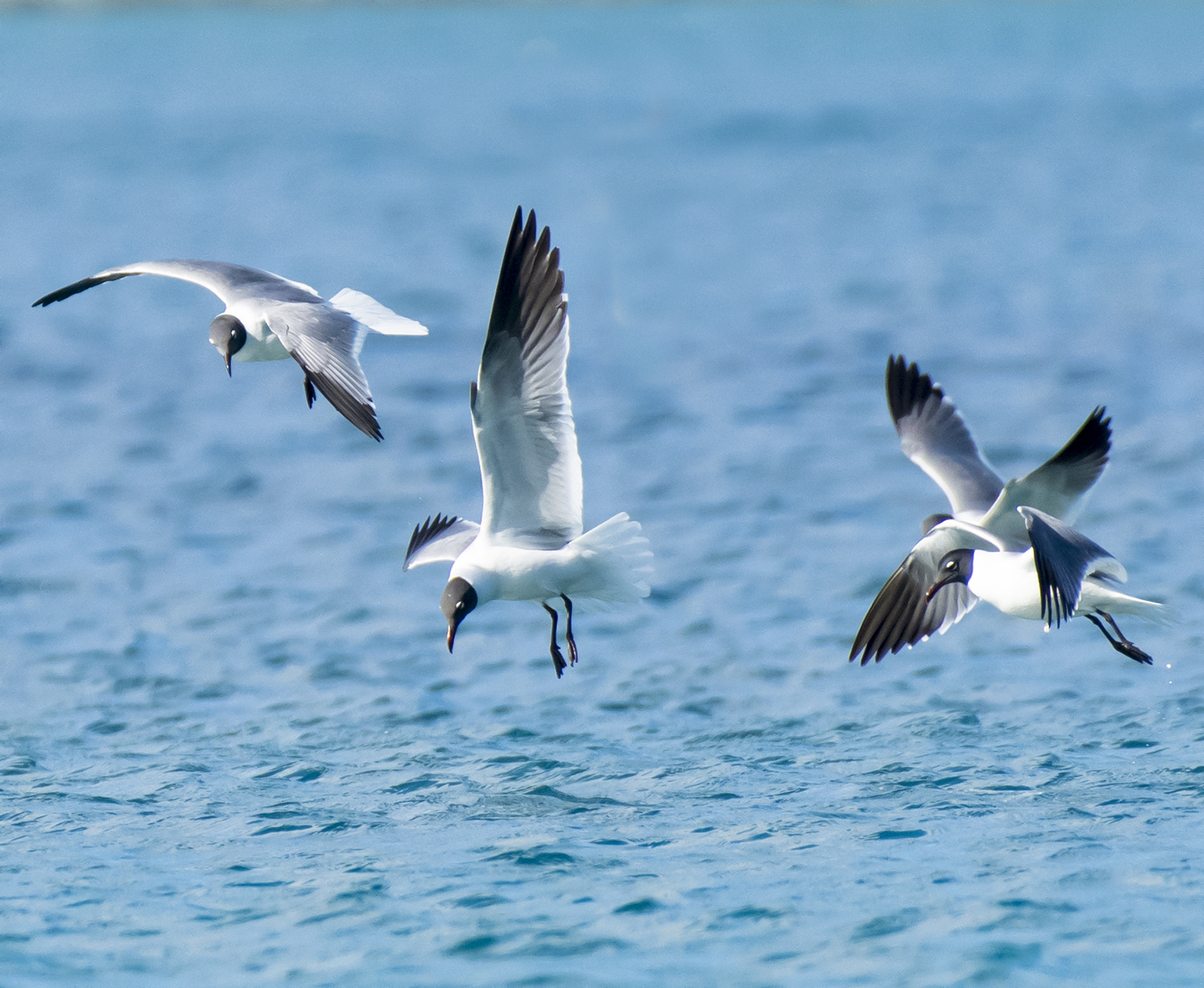
Besides diving for fish (or trying to steal them from the pelicans), the laughing gulls will also walk along beaches and shorelines looking for shellfish, crabs and large insects. On popular beaches, they may also be attracted to trash left by humans.
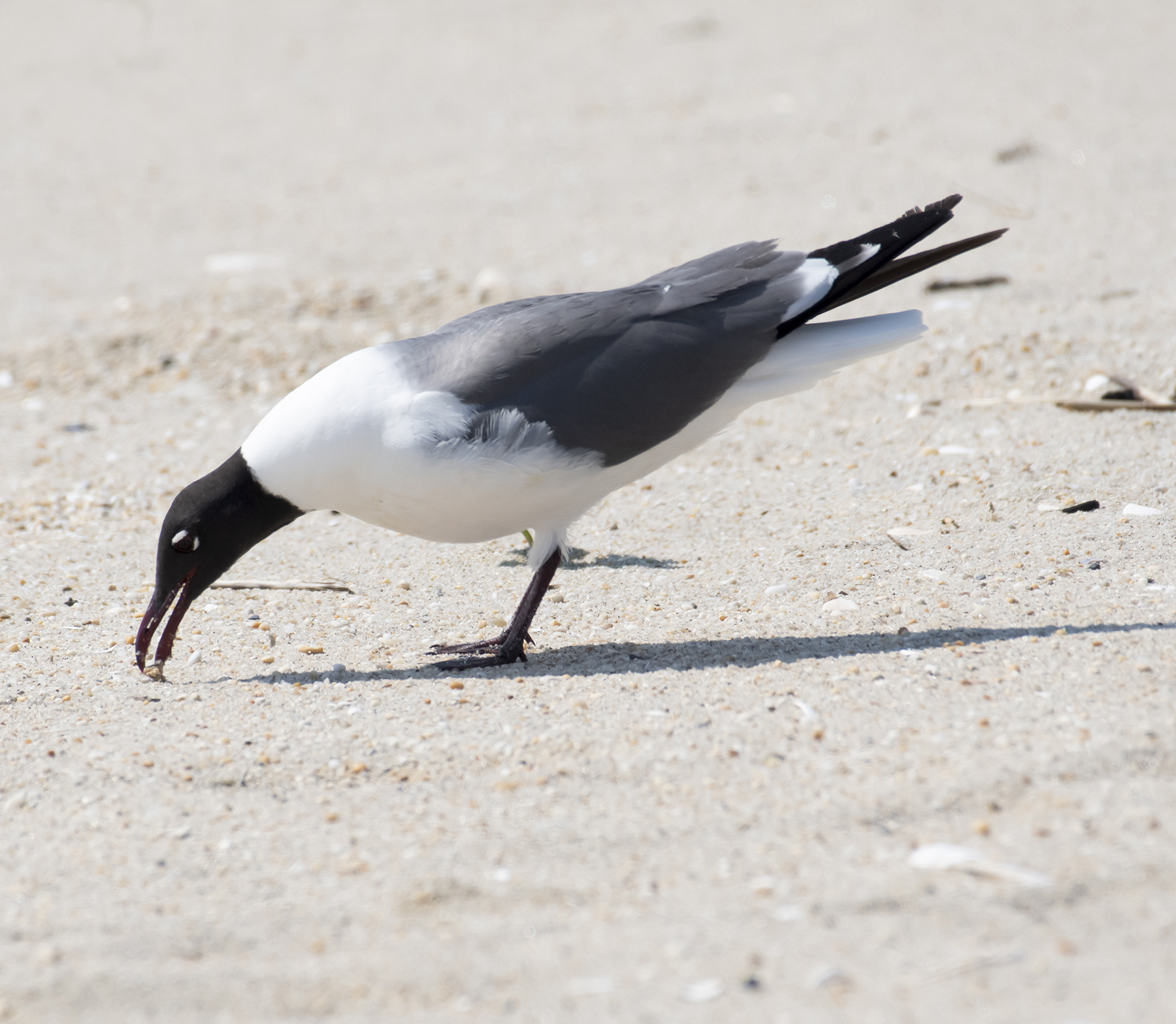
Interestingly, for the last couple of years there have been some laughing gulls staying in the Virgin Islands later in the fall than usual, including a few sightings recorded in the annual December bird counts on St. John.
However, they look quite different when they are not in their breeding plumage. The black hoods become just blurry gray patches on their heads.
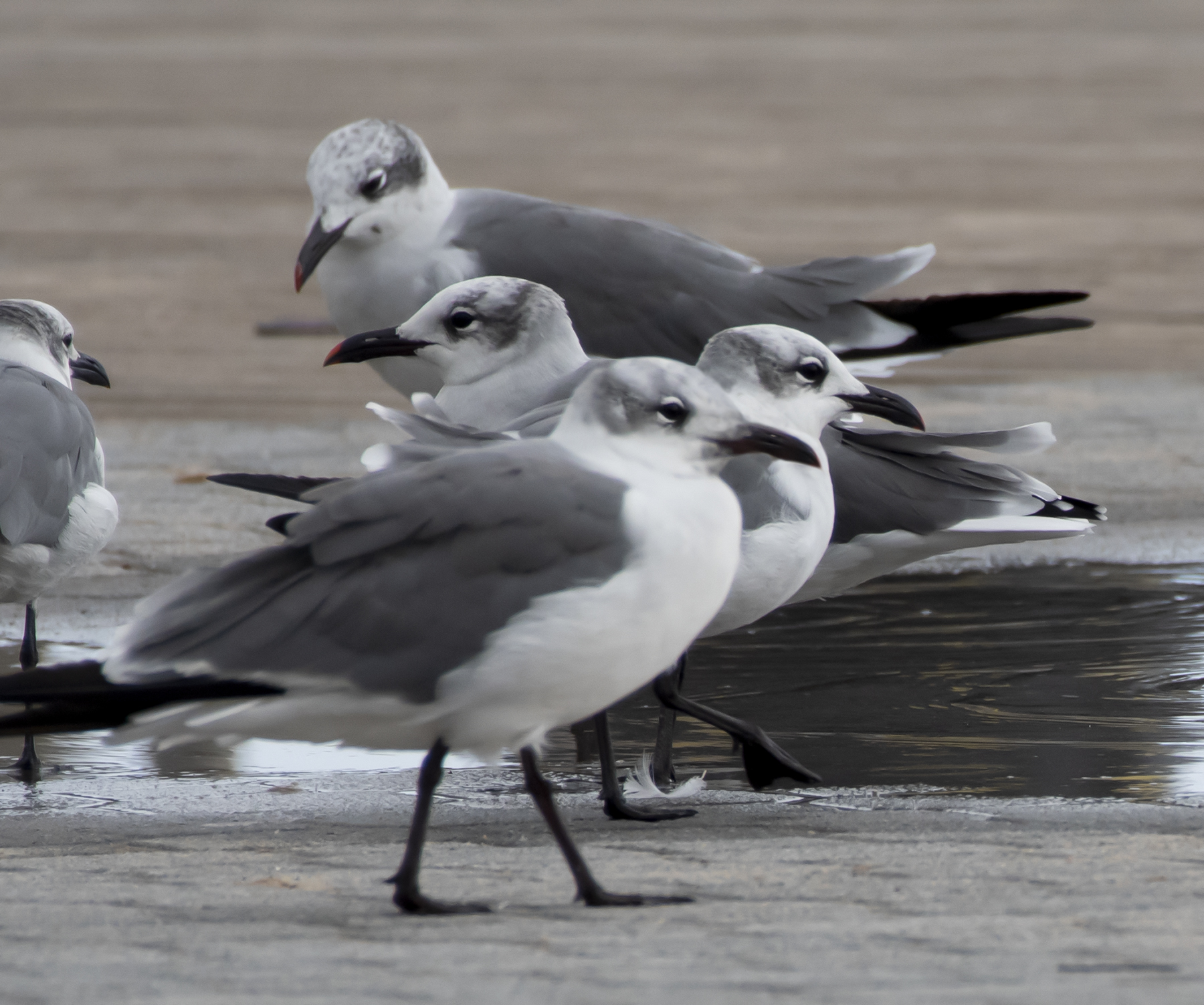
It takes about three years for the young ones to get their adult feathers. At first, their back feathers are brown with white edges. Over time the feathers on top start turning gray.
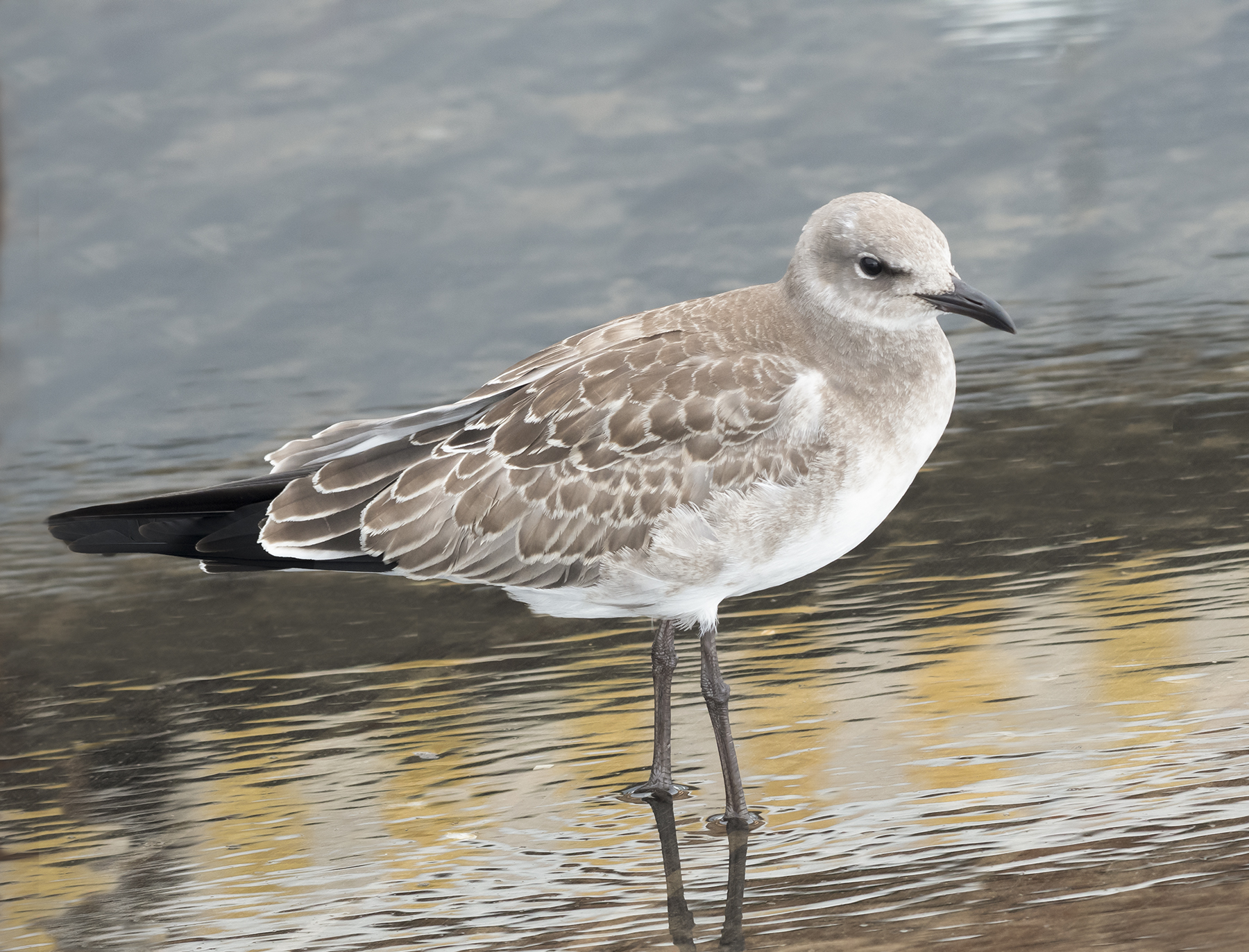
Unfortunately, large numbers of laughing gulls and other birds on islands or coastal areas near airports can sometimes be dangerous to air traffic, so air traffic controllers are not happy to see them around. In fact, just recently, a bird strike caused injuries to passengers on a small plane coming into St. Thomas.
In the Virgin Islands, the U.S. Department of Agriculture’s Wildlife Services program is responsible for keeping birds from getting in the way of arriving or departing planes. Their researchers have found that patches of water collecting on the runways can attract thirsty gulls, so good drainage is important. Controlling insects so they don’t hatch in large groups on grassy areas near runways will also keep the gulls from congregating near the airport, which helps both visiting birds and people in planes stay safe.
However, most of the laughing gulls aren’t all that interested in hanging around the airport. Like other visitors, I think they come to the Virgin Islands to enjoy the beautiful beaches.
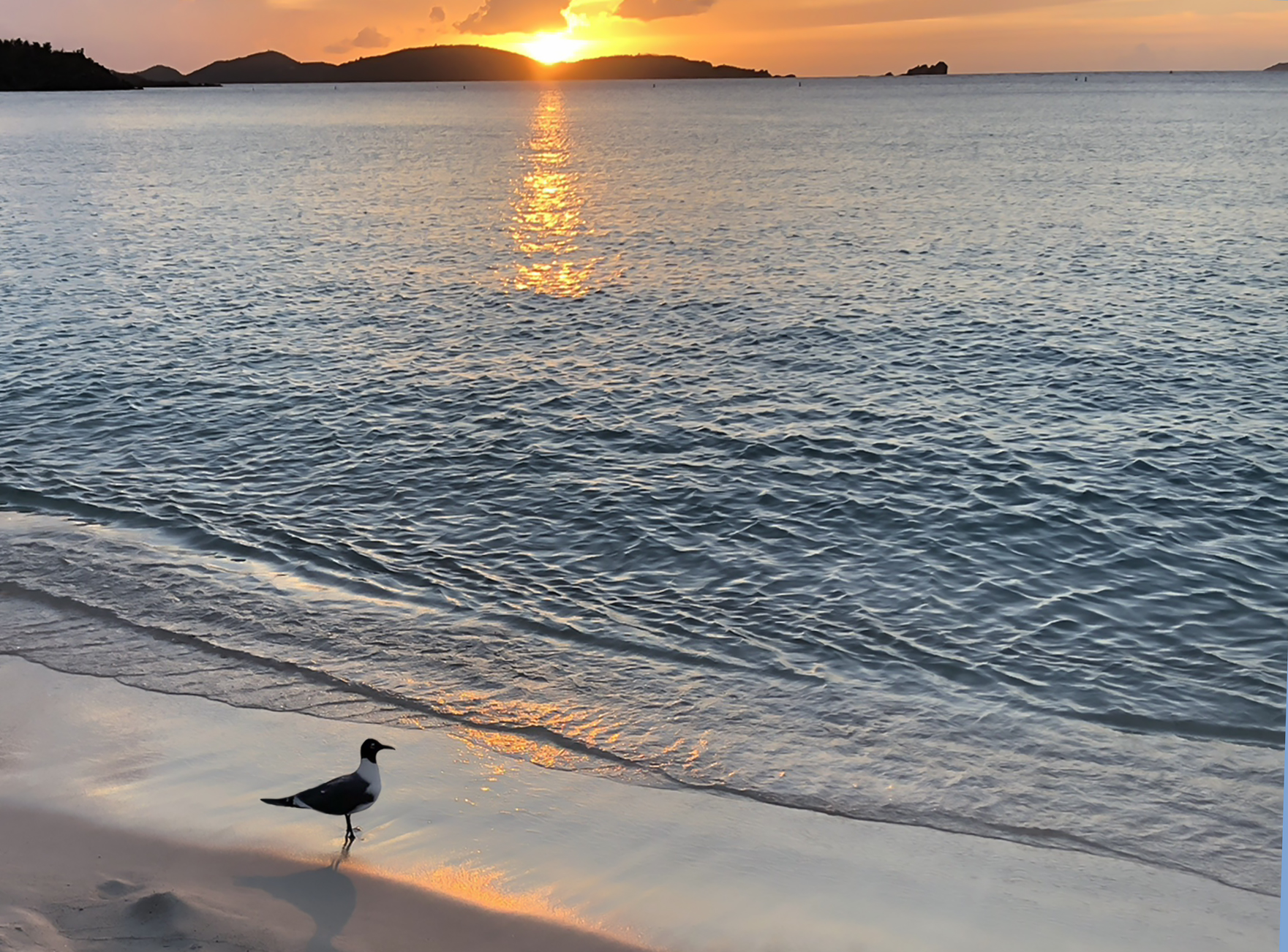
*Gail Karlsson is an environmental lawyer, writer and photographer. She is the author of two books about the Virgin Islands – The Wild Life in an Island House and the guidebook Learning About Trees and Plants – A Project of the Unitarian Universalist Fellowship of St. John. She has also recently published A Birds’ Guide to The Battery and New York Harbor. Follow her on Instagram @gailkarlsson and gvkarlsson.blogspot.com.





